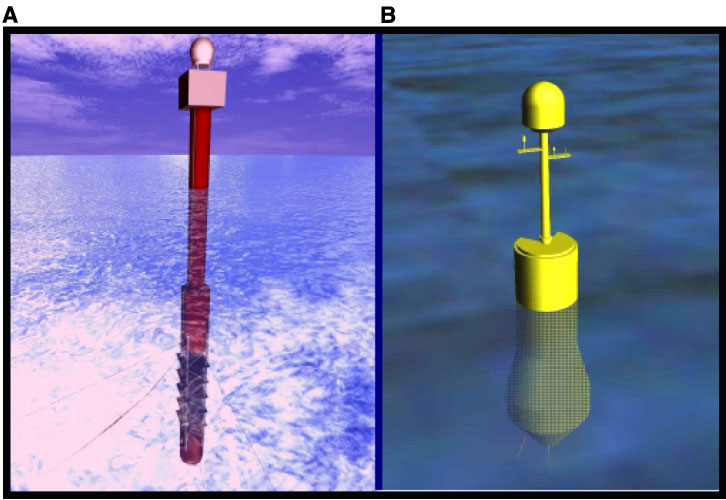Figure F1. Artist's renderings of deepwater Dynamics of Earth and Ocean Systems (DEOS) observatory buoys resulting from (A) 2001 U.S. National Science Foundation (NSF)-supported DEOS design study and (B) 2001 U.K. Natural Environment Research Council (NERC)-supported DEOS design study. Both buoys and mooring systems are designed to provide stable, multiyear to decadal-scale support for long-term observatory measurements at the air/sea interface, within the water column, on the seafloor, and below. They are designed to maintain better than 95% quality of service of continuous medium bandwidth bidirectional satellite telemetry to shore stations and, through them, the Internet. They also generate 1.5-2.0 kW of continuous electrical power at the sea surface using (A) multiple diesel and (B) diesel or fuel-cell technologies. The U.S. design is a spar buoy with three-point mooring optimized for deepwater deployment in tropical through temperate climates. The U.K. design is a hybrid design with two-point mooring optimized for deepwater deployment in particularly harsh extreme northern and southern latitudes.

![]()